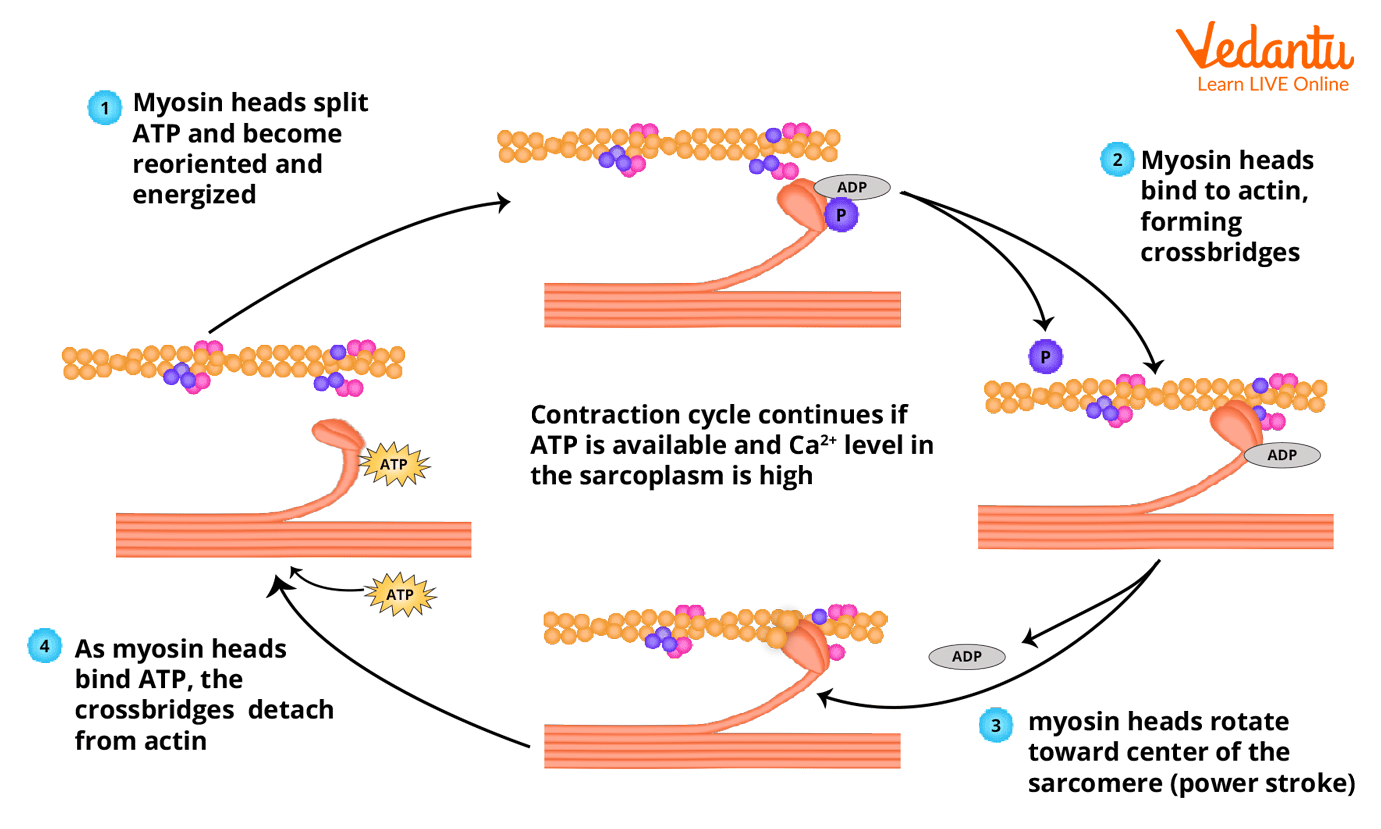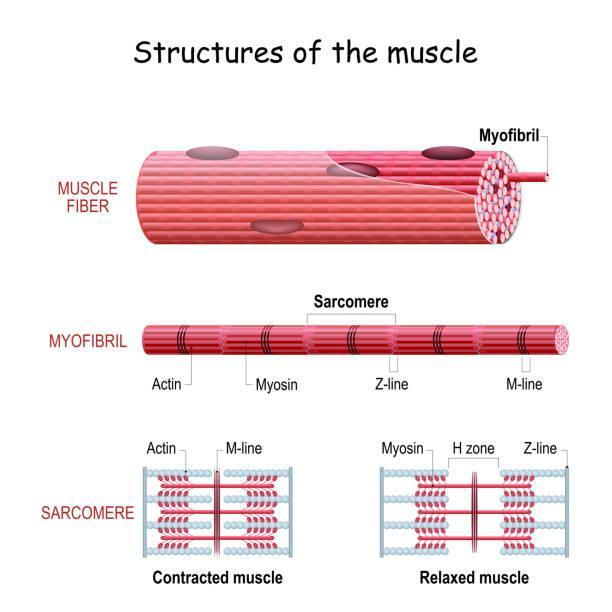Sliding Filament Theory: A Comprehensive Guide for Students
Understanding how our muscles contract is key to appreciating human physiology. In this guide, we explain the sliding filament theory in simple language and break down every aspect—from the detailed sliding filament theory steps to the crucial role of the neuromuscular junction.
Introduction
Muscle contraction is the engine behind every movement, from a simple blink to a powerful sprint. The sliding filament theory is a well-established explanation for how striated (skeletal) muscles contract at the cellular level. This theory is especially important for biology, where students learn that muscles are made up of fibres containing numerous myofibrils, and within these, repeating units called sarcomeres generate movement.
Understanding Muscle Structure and the Sarcomere
At the heart of muscle contraction lies the sarcomere—the basic contractile unit in muscle fibres. Each sarcomere is made up of overlapping thin (actin) and thick (myosin) filaments arranged in bands:
A-band: The central region where thick and thin filaments overlap and remain constant in length during contraction.
I-band: Contains only thin filaments and shortens during contraction.
H-zone: A lighter area in the middle of the A-band, containing only thick filaments; it narrows as contraction occurs.
Z-lines: The boundaries that hold the sarcomere together, giving muscles their striped appearance.
M-line: Located in the centre of the sarcomere, providing structural support by holding the thick filaments together.
These structures not only define the sliding filament theory diagram but also explain how muscle length changes when the filaments slide past one another.
Read More: Mitosis and Meiosis
The Sliding Filament Theory Explained Simply

In simple terms, muscle contraction occurs when the actin (thin) filaments slide over the myosin (thick) filaments, shortening the sarcomere. This process does not involve the filaments themselves expanding or contracting; rather, it is the relative movement between them that produces the force for contraction.
For Class 11 students, understanding that this theory is a cornerstone of muscle physiology is essential. Our explanation of the sliding filament theory's simple mechanism will help you grasp the key principles without unnecessary complications.
Explore Difference Between Actin and Myosin

The Detailed Sliding Filament Theory Steps
Signal Initiation at the Neuromuscular Junction: A nerve impulse arrives at the neuromuscular junction, releasing neurotransmitters that trigger an electrical impulse in the muscle fibre.
Calcium Ion Release: The impulse causes the sarcoplasmic reticulum to release calcium ions, which bind to troponin on the actin filaments. This binding shifts tropomyosin, exposing the myosin-binding sites.
Cross-Bridge Formation: Energised myosin heads attach to these newly exposed sites on the actin, forming cross-bridges—a critical phase in the sliding filament theory steps.
Power Stroke and Filament Sliding: The myosin heads pivot, pulling the actin filaments towards the centre of the sarcomere. This action is powered by ATP hydrolysis and is the primary motion described by the sliding filament theory steps.
Detachment and Re-cocking: A new ATP molecule binds to the myosin head, causing it to detach from the actin filament. The myosin head then re-cocks, ready to form another cross-bridge, continuing the cycle until muscle contraction is complete.
Each of these sliding filament theory steps is vital for producing smooth, coordinated muscle movement.
The Historical Perspective: Sliding Filament Theory Proposed by Pioneers
The sliding filament theory was first proposed by researchers in the 1950s—most notably by Andrew Huxley, Hugh Huxley, and Rolf Niedergerke. These pioneers demonstrated how the overlapping of actin and myosin filaments results in the shortening of muscle fibres during contraction. Today, when we refer to the sliding filament theory proposed by these experts, we acknowledge a significant milestone in our understanding of muscle physiology.
Over time, further research has refined our knowledge of the sliding filament theory proposed by these early scientists, reinforcing its status as a fundamental concept in biology.
The Role of ATP, Myosin, and the Neuromuscular Junction in Muscle Contraction
A key element in muscle contraction is ATP—the molecule that fuels the action of myosin. Myosin, a motor protein, converts the chemical energy from ATP into mechanical work. During contraction, ATP binds to the myosin head, allowing it to detach from actin and then reattach to form a new cross-bridge. This cycle repeats, moving.
The neuromuscular junction plays an equally critical role. It is the site where nerve impulses initiate the contraction process. Understanding the interactions at the neuromuscular junction is crucial for appreciating how signals translate into the sliding filament theory physiology of muscle movement.
Additional Insights into Sliding Filament Theory Physiology
Beyond the basic mechanics, the sliding filament theory physiology encompasses several regulatory mechanisms:
Calcium Regulation: Calcium ions not only enable cross-bridge formation by binding to troponin but also regulate the speed and strength of contraction.
Energy Efficiency: The continuous cycle of ATP hydrolysis and cross-bridge cycling ensures that muscles can respond quickly to stimuli.
Structural Proteins: Proteins such as titin and nebulin help maintain the structural integrity of the sarcomere and regulate filament alignment during contraction.
Unique Aspects and Clinical Relevance
While many texts cover the basics, here are some unique insights that set this guide apart:
Clinical Connections: Abnormalities in the muscle contraction process can lead to conditions such as myopathies and muscular dystrophies. Understanding the sliding filament theory physiology helps in appreciating how these conditions affect movement.
Exercise Physiology: The efficiency of the cross-bridge cycle underlies improvements in muscle strength and endurance. Thus, the sliding filament theory's simple explanation is also crucial for sports science.
Advanced Research: Recent studies have expanded on the sliding filament theory proposed by early researchers, exploring how variations in filament overlap can affect the force produced by a muscle.
Related Links:


FAQs on Sliding Filament Theory: Brief Steps, Diagram and Physiology
1. What is the sliding filament theory?
The sliding filament theory explains that muscle contraction occurs when actin filaments slide over myosin filaments, shortening the sarcomere. This sliding filament theory simple concept forms the basis for muscle physiology.
2. What are the sliding filament theory steps involved in muscle contraction?
The key sliding filament theory steps include nerve stimulation at the neuromuscular junction, calcium ion release, cross-bridge formation, power stroke, and ATP-driven detachment of myosin from actin.
3. Who was the sliding filament theory proposed by?
The sliding filament theory was proposed by pioneering scientists such as Andrew Huxley, Hugh Huxley, and Rolf Niedergerke in the 1950s, revolutionising our understanding of muscle contraction.
4. How does the neuromuscular junction contribute to muscle contraction?
The neuromuscular junction is the site where nerve impulses trigger the release of calcium ions, initiating the cascade of events that form the basis of the sliding filament theory physiology.
5. Where can I find a sliding filament theory diagram?
Our page features a detailed sliding filament theory diagram that visually represents the interaction between actin and myosin, clearly outlining the sliding filament theory steps for easy reference.










